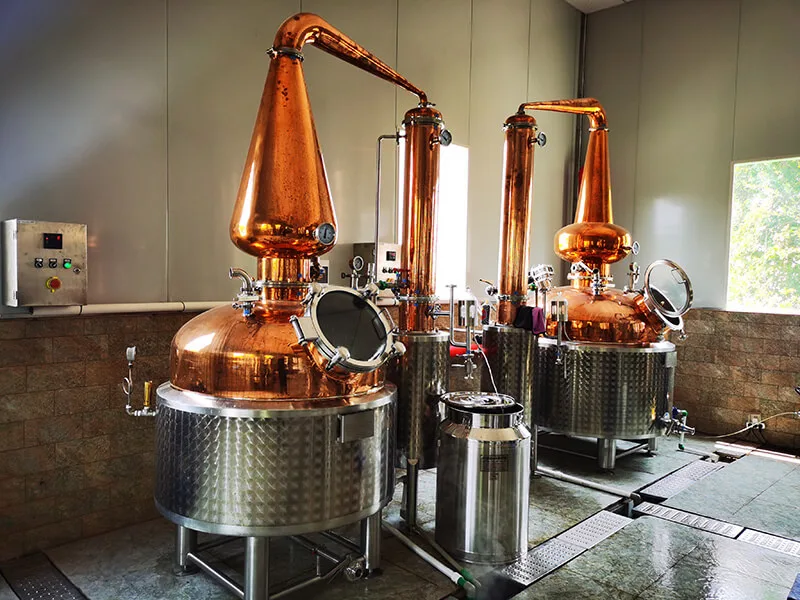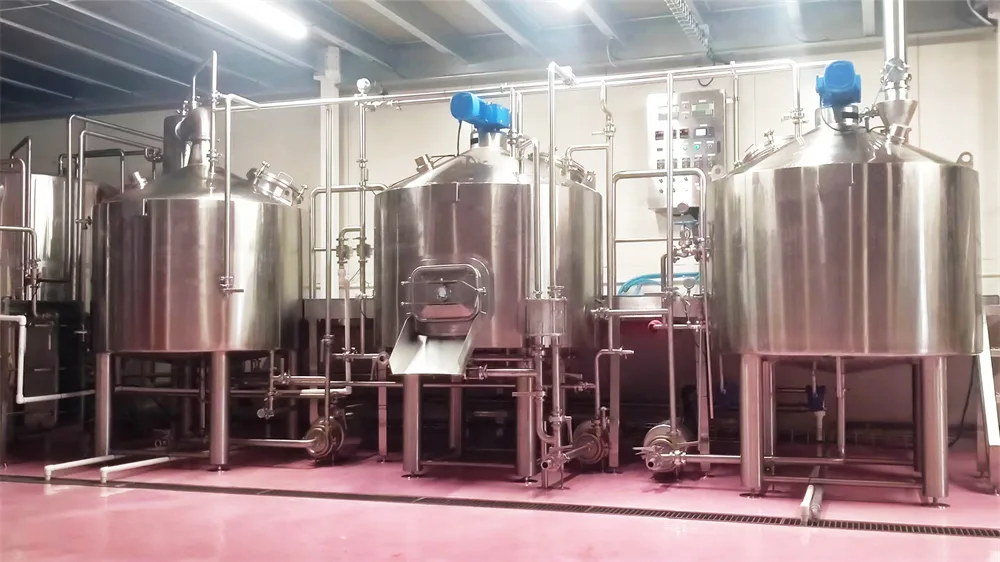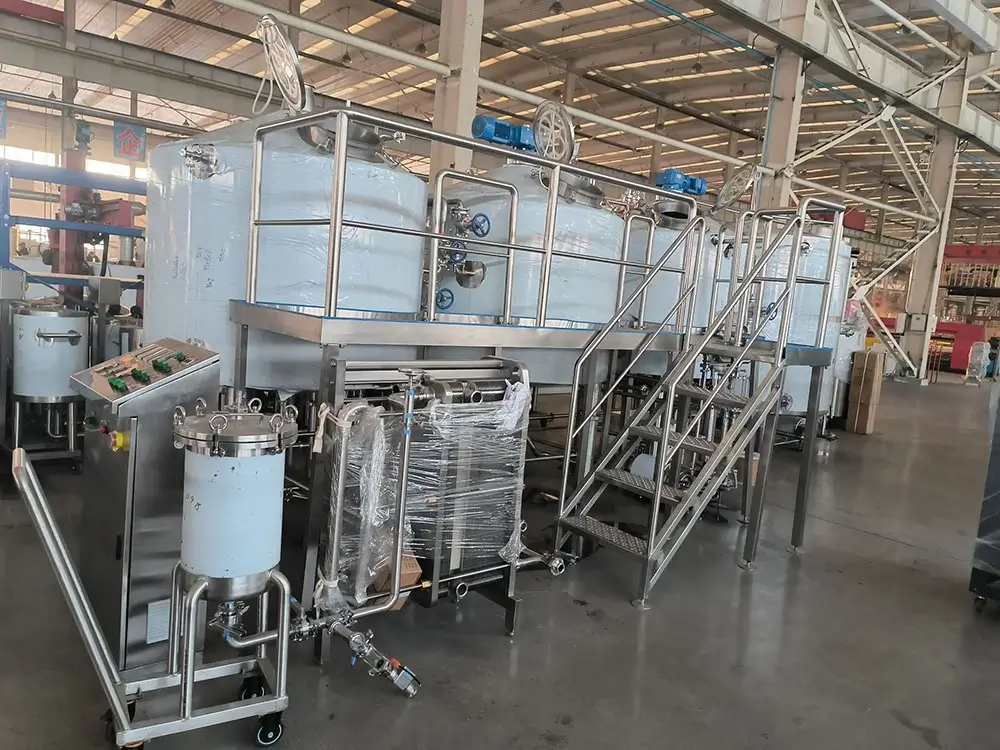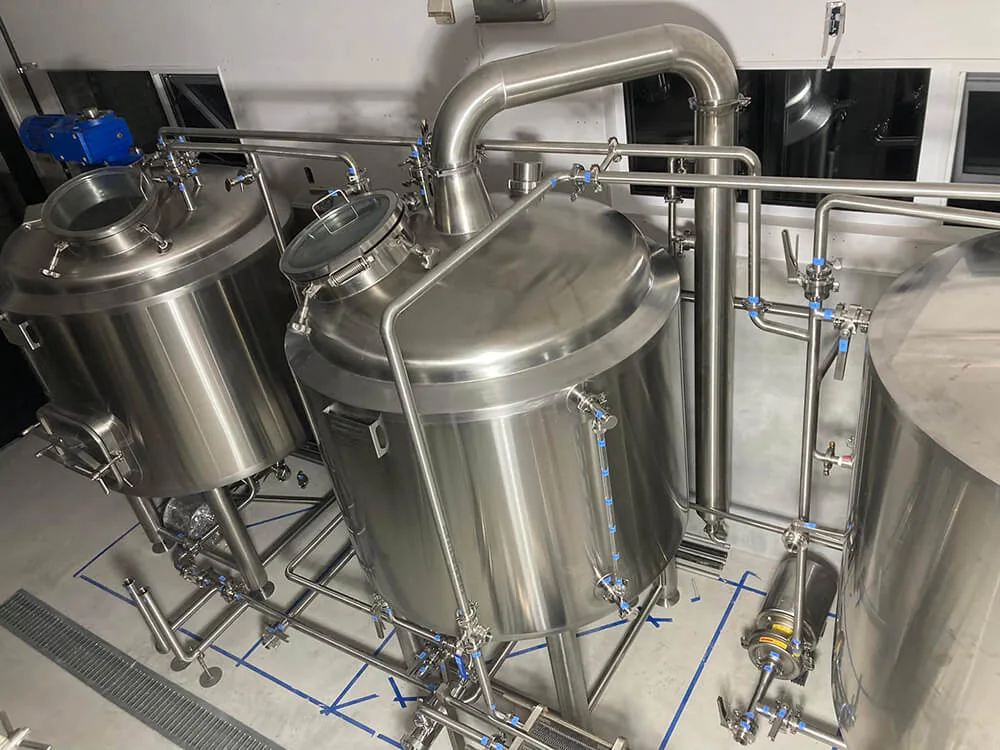An alcohol distiller is a tool that helps make strong drinks. It takes beer or wine and makes it into things like whiskey or vodka. This happens by heating and cooling the liquid in a special way.
People have been making alcohol this way for many years. The first stills were made hundreds of years ago. Now, we have better ways to do it.
What are the main components?
Several crucial components make up a typical alcohol distiller machine. Every component is essential to the process:
Pot: Fermented mixture is stored in a pot and is boiled.
Column or neck: When it heats up, alcohol vaporizes first, which moves upwards through the column. It gets separated from water and other stuff.
Condenser: The condenser converts it into liquid once again.
Spirit safe: It makes sure the purified alcohol is collected.
Gauges and thermometers: They assist in maintaining pressure and temperature.
Reboiler: It reuses heat to increase efficiency without wasting any energy.
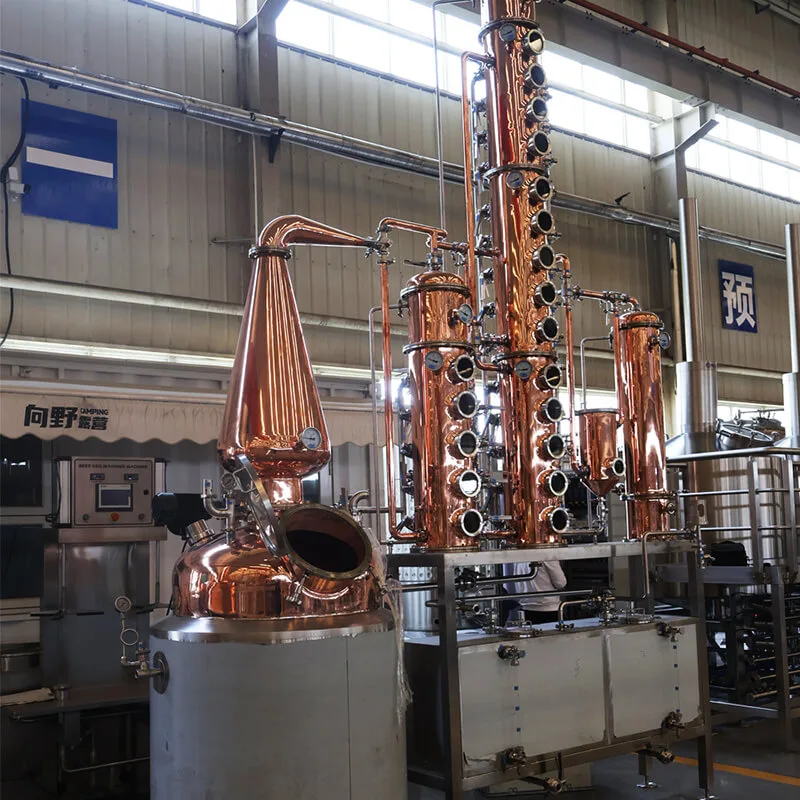
How Does An Alcohol Distiller Work?
Alcohol distiller in large set up
1. Fermentation
Fermentation kickstarts the process. Yeast is used to break down sugars in foods like fruits, and grains. This process produces alcohol and carbon dioxide.
Fermentation takes anywhere between 5 to 7 days. The yeast works great in airlock containers. This also ensures that unwanted bacteria stay out. Different yeast strains are used to create various flavors and alcohol levels.
2. Boiling & Vaporization
After fermentation, the mixture transfers to the alcohol distiller. The heating starts, and alcohol boils at around 78°C, while water boils at 100°C. Alcohol has a low boiling point, hence it vaporizes first. This difference helps the distiller to separate the water and alcohol.
At 78.4°C, the vapor pressure of alcohol matches the air pressure, so alcohol vaporizes.
The alcohol distiller kit uses a boiler to heat the liquid. As the temperature rises, alcohol molecules escape as vapor.
Modern designs use sensors and controls to keep the temperature steady, which improves vaporization efficiency.
3. Condensation & Collection
Vapor enters the condenser after passing through the column after forming. The vapor is cooled by the condenser, which transforms it back into liquid. In order to collect purified alcohol, this step is essential.
In order to absorb heat from the vapor, the condenser frequently uses cold water.
The vapor condenses into liquid alcohol as it cools, and the alcohol drips into a collection jar.
Fractional distillation columns, filled with materials like copper mesh, allow repeated cycles of vaporization and condensation. This process increases purity.
A home alcohol distiller makes the entire process easier. It helps collect smaller batches. Despite its usage at small scale, it has a powerful system of condensation and collection.
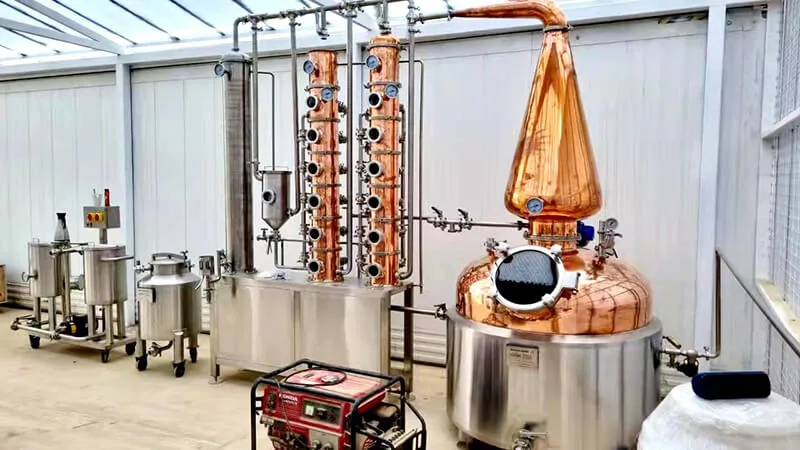
Types of alcohol distillers
Let’s explore the primary types of an alcohol distiller:
1. Pot Stills
Pot stills are a traditional method to get rich spirits like rum and whiskey. They work in batches. The process usually begins from filling the pot with fermented mixture, heating it, and then collecting the alcohol. The process helps achieve rich flavors and is ideal for small-scale distillation.
Historically made of copper, excellent for heat transfer and removing sulfur, a pot still remains popular in home distillation kits.
Their simplicity and ability to control aroma and alcohol concentration make them accessible for beginners while offering better results that appeal to craft distillers focused on character and taste.
2. Column Stills
Continuous stills, another name for column stills, operate in a different way. This machine uses a tall column with trays or plates to distill alcohol.
The design makes the spirit purer by allowing vapor to rise and condense repeatedly. Column stills are ideal for large factories and commercial use because they operate continuously.
Compared to pot stills, column stills have a much higher alcohol content, up to 96%. For home use, the mini column design of the countertop alcohol distiller is frequently used.
Alcohol and impurities are separated with the aid of packing materials inside the column. More control over output and purity is possible with this configuration.
Product Roundup: Top Distillers
These are some of the best options:
Traditional Pot Still – Good for whiskey and rum
Modern Hybrid Still – Can make many types of spirits
Continuous Columns – For high-volume vodka production
What’s the difference between vodka and whiskey distillation
The main difference between vodka and whiskey distillation lies in their goals—purity versus flavor retention. Vodka aims for an extremely clean and neutral spirit, so it is typically distilled using a continuous column still. This type of still allows the alcohol vapor to pass through multiple distillation plates, removing most impurities and flavor compounds. The result is a very high-proof spirit, often above 95% alcohol by volume. After distillation, vodka is usually filtered through charcoal and diluted to around 40% ABV, giving it a smooth, pure, and almost flavorless character.
Whiskey, on the other hand, focuses on preserving the natural flavors of the raw ingredients. It is usually distilled in a traditional pot still, which operates in batches and retains more congeners—aromatic compounds that contribute to the spirit’s complexity. Whiskey is distilled to a lower strength, typically between 60% and 80% alcohol, allowing it to maintain rich flavors of grain and malt. After distillation, it is aged in wooden barrels, where the spirit interacts with the wood, gaining color, aroma, and depth over time.
In essence, vodka distillation emphasizes purity and neutrality, while whiskey distillation highlights character and depth. These different approaches define the distinct identities of the two spirits in both taste and production style.
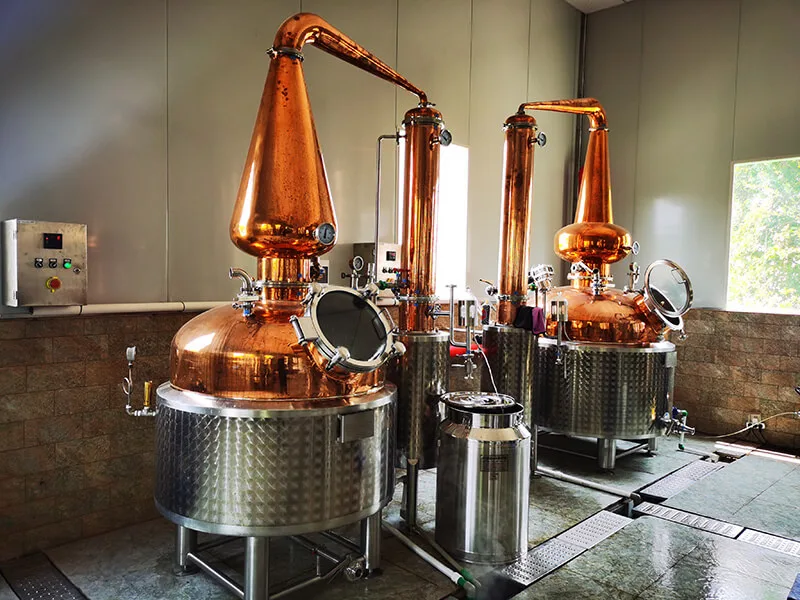
Conclusion
An alcohol distiller is the heart of every spirit-making process. From separating impurities to refining flavor, it transforms simple fermented mixtures into high-quality beverages like whiskey, vodka, and rum. Understanding how distillers work helps you choose the right system for your production goals—whether you need purity, character, or flexibility.
At Meto, we specialize in designing and manufacturing professional-grade alcohol distillation equipment for breweries, distilleries, and craft producers. Our systems combine efficiency, safety, and precision to help you produce premium spirits with consistent quality.
Start your distillation journey with us—discover reliable, customized distillers built for true craftsmanship. If you are interested in our beer distillery equipment, feel free to 联系我们 for more information.

